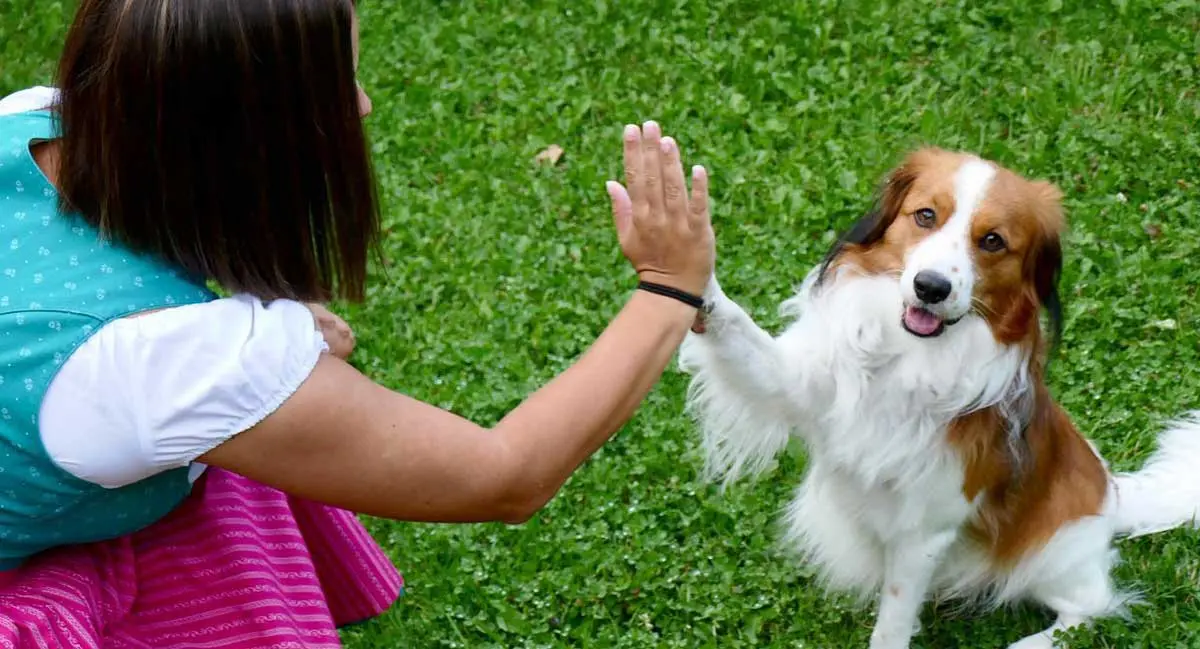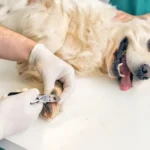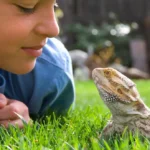Have you ever noticed that after giving your furry friend some loving scratches and belly rubs, they seem to shudder or quake all over? You’re not alone many dog owners witness this shaking behavior from their pets.
But what exactly causes canines to tremble in the aftermath of affection? This article will explore the science behind why dogs shake after you pet them.
A dogs shake after being petted may seem strange to human observers at first glance. However, with some exploration of canine behaviorism research and the neuroscience behind bonding, we can gain valuable insight into this involuntary response.
Veterinary experts agree it is generally a sign of relaxation and trust between man’s best friend and their owners.
Dogs shake is a Sign of Relaxation and Contentment
When dogs receive physical contact like petting that they enjoy, it triggers the release of dopamine and endogenous opioids in their brain which induce feelings of relaxation and bond forming with their human companions.
The body shakes that often ensue are thought to help dogs transition physically and mentally from a stimulated state into a calm one.
Behavioral studies have found these relaxing post-petting shakes act as a full-body sigh, where dogs physically signal through trembling vibrations that they are totally comfortable and at ease.
The purpose seems to dissipate excess tension that built up during arousing interactions. Much like a human may sigh after a massage, dogs too appear to release stress through the shaking motion across their muscles.
Veterinary behaviorists cite countless observations of dogs quivering in a limp, loose-bodied manner after affectionate contact with favorite people. Their muscles do not seize up tightly but rather quiver loosely, and signs like relaxed ear positions, droopy eyes and tongue flicks further indicate a calm, satisfied state.
Tails usually wag gently as well. Through this display, our canine companions communicate comfort both to us and within themselves.
Dogs shake is a Form of Communication
Interestingly, involuntary bodily signals like shaking after petting also allow dogs to deliberately share feelings with humans on some level.
By transmitting relaxation cues to people through trembling, canines help reinforce pleasant social bonds between the species. It forges understanding between parties when context is considered.
On a subconscious level, dogs displaying their contentment through shaking communicates that affection was welcomed warmly. Bonding neurochemicals like oxytocin surge not only within the pup but prompt reciprocal kind feelings from attentive owners witnessing the quivering.
Some theorize dogs found a way to biologically tighten social affiliation using physiological perks of touches.
Other communication theories posit that trembling may spread a dog’s personal scent onto their human as a primitive “marking” ritual. By allowing their vulnerable tremors, pooches show tremendous faith their people mean no harm.
Shaking opens wiggly space for trust building through canine-human understanding without words. Mutual benefits arise from such cross-species cooperation.
Some cutting edge ethological research now examines post pet shaking as an evolved attachment behavior intrinsic to a dog’s social wiring.
While cerebral mechanisms remain murky, instinct clearly compels man’s best friend to bond through vibration in harmony with supportive humans caring for their wellbeing. A dance of endorphins and empathy strengthens this unique cross-species partnership.
Alternative Triggers for Shaking
While relaxing shakes signify care bonding with favorable people, trembling may less positively intimate distress if traits differ from calm quivering:
- Prolonged or violent shaking could point to pain, stress, or disease flagged by a vet check. Joint issues often cause shaking among senior dogs.
- Shaking paired with wide eyes, tucked tails or lip licking probably reveals anxiety over pain versus pleasure. Contextual clues help interpret meaning.
- Younger puppies under 6 months may tremble from intestinal illnesses like worms that afflict many canines in early life stages before adult immunity establishes. Owners should watch for other symptoms and consult their vet promptly if concerned.
Nevertheless, in the clear majority of petting scenarios, transient trembling in dogs symbolizes appreciation for human love and attention surrounding them.
With raised social smiles and wagging happiness, our furry friends use body language to express thanks in their own nuanced way.
The Science Behind Why Shaking Feels Good
Neuroscientists continue unraveling precise biological drivers for behaviors like post-pet shaking. Dopamine, opioids and oxytocin released during positive human touch appear central to forming trusting bonds between dogs and their favorite humans.
These feel-good chemical messengers induce relaxation that dogs diffuse throughout their bodies through full quivering episodes.
Research indicates these mammalian neuropeptides activate brain reward circuitry to reinforce naturally enjoyable social engagements. Repeated releases encourage dogs to seek out human proximity and reap health perks.
Over time, endogenous opioids like beta-endorphins may even relieve minor aches and pains through generated analgesic (pain-relief) impacts as a side perk of human affection.
The calming vagus nerve pathway also seems activated during skin-to-skin petting sessions. As the largest parasympathetic nerve, it slows heart rate and reduces tension in dogs experiencing pleasurable touch.
Subsequent quakes help diffuse this stimulated relaxation further via muscular contractions rippling outward. Vagal nerve stimulation proves therapeutic for dogs too in managing stress and anxiety in careful medical applications.
On a basic physiological level, we observe dogs shaking off water or shaking toy chew toys engross them. Perhaps post-pet trembling naturally completes a satisfying mental and physical experience, dissipating remaining arousal and restoring equilibrium for pets.
They likely partake without overthinking implications as complex as human cognition, yet subconsciously reap important benefits through this automatic somatic response.
In summary, while the exact neurochemical picture remains emerging, canine trembling after enjoyable petting sessions seems intricately tied to distributing relaxation throughout a dog’s body and deepening the human bond through nuanced communication of canine satisfaction and contentment.
Using physiology to thank caring humans, our furry friends have evolved to form resilient partnerships with people through bonding biochemistry activated by simple gestures of affection.
Individual Differences in Shaking Tendencies
While relaxation tremors remain exceedingly common across breeds and sizes following friendly contact, some notable individual differences appear.
Timid or anxious dogs may shake less readily or more subtly due to alert temperaments staying on guard. Rescue dogs with unknown pasts too exhibit varied shaking until fully comfortable in stable homes.
With time and consistency, most eventually mirror tendencies of relaxed dogs guided by circumstances rather than inherent nature.
Prey driven herders like collies often shake more vigorously with full body wiggly escapes after play time or work earned rest, perhaps venting remained excitement before rebooting. Laid back retrievers typically display slower, shorter Quakes transitioning to couch potato mode as tail wags wind down.
Teacup breeds and seniors also may quiver lightly compared to exuberant Labradors twitching out residual zombie’s. Size alone doesn’t dictate shaking expression though tiny terriers sometimes rival hounds for heartily quivering their appreciation. Individual personality factors more than breed or stature.
As with humans, each dog experiences nuanced emotions within a spectrum. But when affection comes from valued people rather than excitable strangers or kids, trembling provides one joyful love language many canines naturally adopt to connect with their protectors in a calming, tangible way.
Trust enables the relaxation response taking form as dogs soak in supportive human company bringing out their best selves through play and pets.
FAQs
Why does my dog shake off after I touch him?
The shake off is a way of releasing both tense muscles and emotions
Why do dogs shake after being touched?
As a way to alleviate stress or discomfort caused by the physical contact
Why does my dog shake when I cuddle him?
Dogs often release tension after a stressful event.
Why do dogs shake after getting pet?
Shaking their body is a way for dogs to “reset” and release that energy
Conclusion
In closing, while canine quaking necessitates some decoding, through empathy we can appreciate it as a reassuring indication most dogs feel treasured by their people. Unless medical issues exist, temporary shaking signifies a job well done by owners caring for furry family bonding needs.
So next time your trusted hound hitches the shakes, send them licks and a thanks for demonstrating faith through furry vibes of thanks. Their shivers communicate comfort speaking to deeper threads connecting canines and caring humans.
Let me know if any other context or details could further enhance understanding of why dogs shake after pets and how this response forges trust central to the special human-canine companionship bond.









